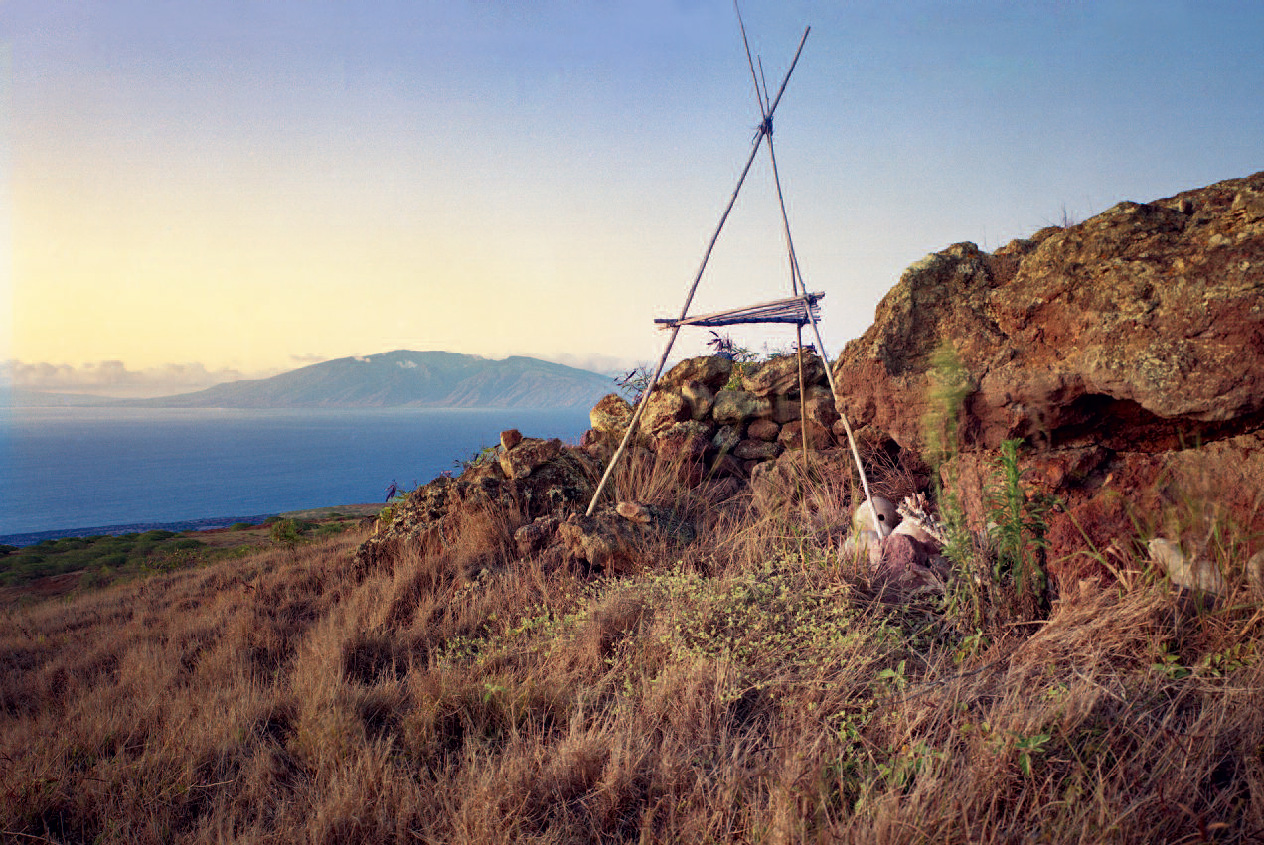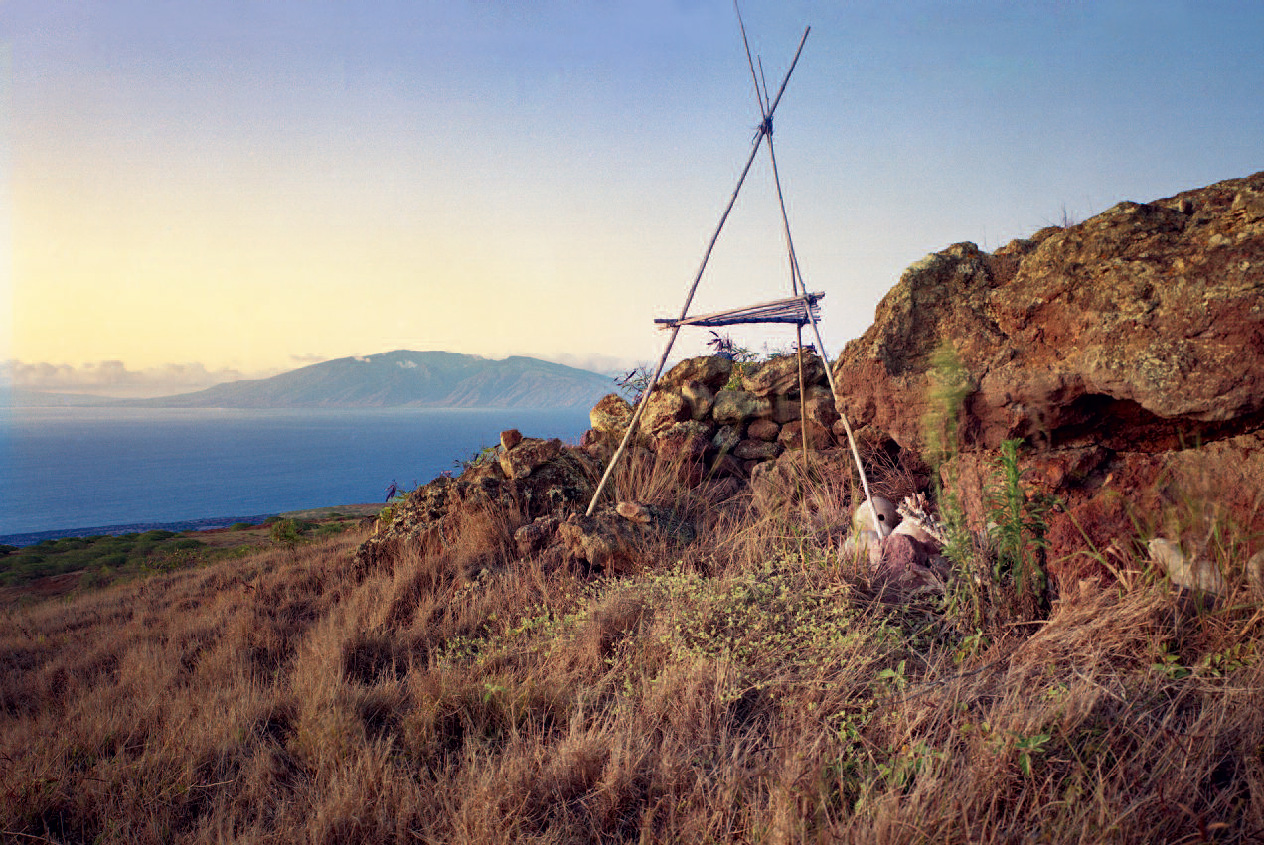
Photographs by David Ulrich
Photographing a sanctuary and its desecration.
What is the meaning of sanctuary—and of sacred places—in the context of our lives and creative pursuits?
We recognize certain locations on earth, and even within our own spheres of activity, as special and consider them sacred by virtue of a resonance that suggests a living intelligence. We often long for contact with these places that have the capacity to help us return to ourselves. We may be attracted to the locations of our childhood; or cities where there is an enormous reservoir of human nature and activity, such as New York, London, Benares, and Tokyo; or places where energy is impregnated in the land itself, regions of power and grace, such as Mount Fuji, Canyon de Chelly, Mauna Kea on the Big Island of Hawai‘i, or the Himalayas. These places provide sanctuary and renewal. They remind us of the fortitude and unquenchable desire of the human spirit—for relationship with the otherness of life.
The wahi pana (storied places) found in the islands of Hawai‘i are a profound source of energy and inspiration for those fortunate enough to experience them. James Houston writes of certain Hawaiian sites… The place has a kind of power, which is to say, it releases something in those who experience it. And after enough people have visited the spot, to stand, to pray, to sing, to fast, to chant, century upon century, its original impact has been layered and amplified until the ancestral atmosphere… is so rich with what the Hawaiians call mana, you can feel it like a coating on your skin.1
For years, I have tried to understand the nature of the Hawaiian experience and its potent effect on my internal efforts and creative work. As I experience the land, people, culture and traditions, I am consistently nourished and moved. The volcanic crux of the archipelago touches and quickens something within me. I first arrived in Hawai‘i after a devastating personal injury that resulted in the loss of my right, dominant eye. As a photographer, I was attracted to the transformational nature of the landscape, viewing the fiery land as a metaphor of death and rebirth, sacrifice and healing.
The sheer force of the mystery and beauty of Hawai‘i captivated me for many years—and eluded capture with a camera. What kept me coming back again and again was the illusion that it could be contained within a picture frame. Nature is too big, too unknowable and multidimensional to be contained on two-dimensional sheets of silvered paper. The highest mysteries cannot be reduced to human dimensions. But we try. What is seen in an artist’s work is a pale reflection of a search for truth, an echo of the song of the world.
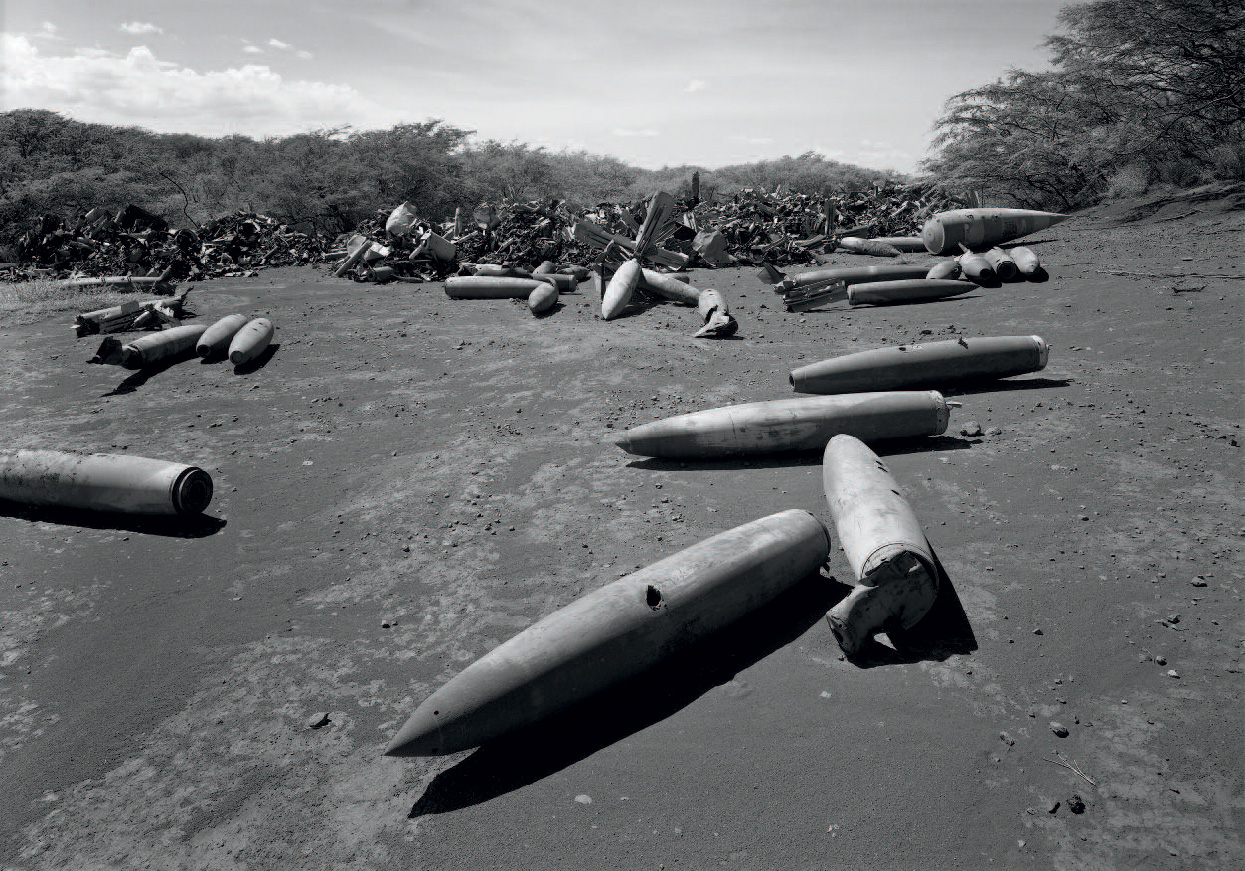
Looking out over the waters between Maui and Lana‘i at the uninhabited island of Kaho‘olawe, sacred to the Hawaiian people and used for ordnance training by the US military since WWII, I told my partner that someday I would photograph its distressed ‘aina (land). Accessible only by the Hawaiian community for observance of cultural and religious practices, or for educational and scientific purposes, the island was exceedingly dangerous and off-limits to the general public, with live ordnance littering the landscape.
In 1993, I was invited by organizers from a consortium of community groups to become part of a team of four artists commissioned to document Kaho‘olawe for a book and traveling The island offers great contrasts, between the sacredness of the ancient cultural sites and the terrifying damage created by modern weapons of great destructive force. Archeologist Rowland Reeve observes: “Those who have the privilege of spending much time on Kaho‘olawe tend to be deeply affected by the experience. What it is that we find so moving is hard to express. Perhaps it is the island’s physical beauty, its mingled sense of tragedy and hope, or the powerful lingering presence of ‘ka po‘e kahiko’, the people of old.”2
Over a period of a year and a half, I made more than twelve visits to the island, each lasting between four and six days. Our team was given the opportunity to explore the entire island, return to sites repeatedly, and photograph in accord with our direct experiences of the land, the ancient sites, and the people. A group of native Hawaiians, the Protect Kaho‘olawe ‘Ohana, had become stewards of the island and made monthly accesses for traditional cultural observances and revegetation efforts. They guided us and helped interpret the many cultural sites.
It was one of the most enriching experiences of my life, and one of the most physically arduous. Getting to and from the island is no easy task, and getting around once there is limited to one jeep trail and hiking through shadeless, dusty, and treacherous land, with the threat of live ordnance virtually anywhere and everywhere. We had to be escorted by explosive ordnance demolition teams on every outing and journey we made. Thankfully, they took their jobs of preserving our safety seriously.
Access to the island involved leaving Maui at four a.m. and crossing the channel on a boat, arriving at Kaho‘olawe by dawn. Since there is no safe anchorage on the northeast side of the island closest to Maui, we were literally dumped in the water offshore, gear and all, and required to swim to shore. We became experts in waterproofing our photographic gear for its frequent forays into the ocean.
The photography proceeded slowly because of the unique conditions presented by the island’s natural and man-altered features. I had never seen or experienced such a place, one that contained such subtlety of natural beauty and such powerful, seemingly untouched ancient shrines—nor one that had been so thoroughly devastated by military technology and modern attitudes. Not only had the bombing caused much damage, but the over-grazing by sheep and goats, introduced by ranchers early in the twentieth century, caused much deforestation and massive erosion. The island was and is literally being washed out to sea.
The ancient sites, heiaus, and other culturally significant places have one remarkable characteristic: they have rarely been visited, except by a very few archaeologists and members of the Protect Kaho‘olawe ‘Ohana, and so their mana (spiritual power) is intact. We had the feeling, upon visiting some of the sites, that the people of old simply got up and left this place yesterday—their tools and implements are still scattered over the ground today. Unlike many of the world’s sacred sites, which have been clambered over by uncounted numbers of visitors and where one senses that the spiritual energy has been diminished due to the sheer volume of humanity passing through, much of the spirit of Kaho‘olawe remains. The sacredness of the island as well as its devastation have prevented development and tourism and an endless stream of visitors from further altering the Hawaiian legacy of earth, stone, and ancestral voices.
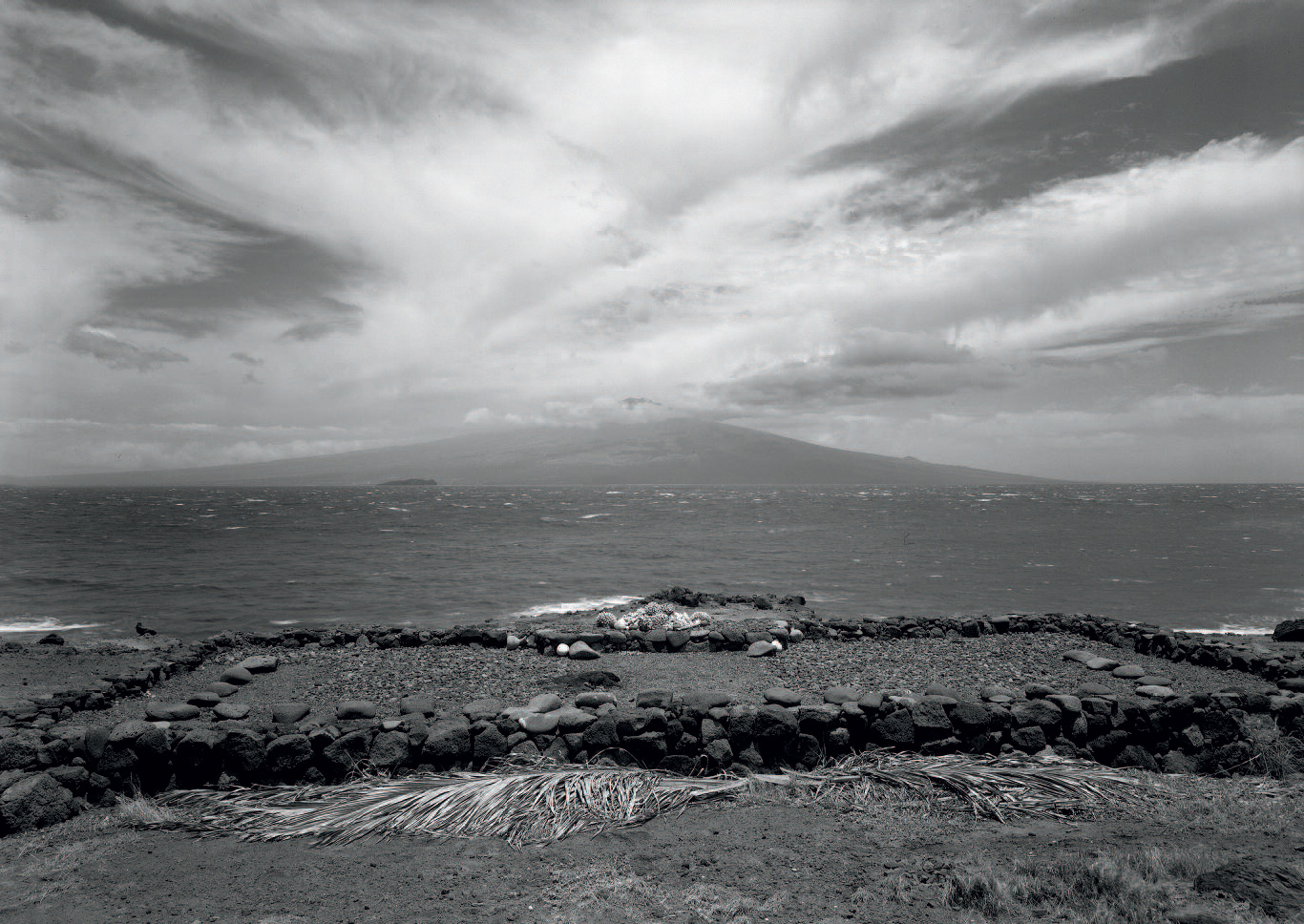
In the early period of attempting to make photographs of this unusual, reverberating landscape, I sensed the need to listen, to learn, to step back and get to know the island as intimately as possible. I felt at least the possibility of making images that integrated in a single gesture the massive destruction and underlying feeling of sacredness, of something very real and special that I couldn’t quite grasp, which remained elusive to my understanding.
Never before had it been so difficult to arrive at a place of creative interaction with the subject in front of my lens—to find the images that reveal my connections and perceptions of a place. The island revealed itself to me slowly and in direct proportion to my efforts, my strivings to be respectful, responsive, and above all, to learn about its many sides and features. It wasn’t until our later visits to the island that providence cooperated in revealing the shape of the images I was to contribute to the project. I saw and felt the intense contradiction between the ancient mana of the powerful landscape against the abhorrent effects of explosive objects that deeply wounded the earth and concurrently the soul of a people. Poignant to my awareness was that these weapons, these killing devices, came from my culture and heritage. I was saddened that American colonial attitudes and military might had so violently overwhelmed this fragile land of haunting beauty. How could I represent that realization through a camera?
After a considerable investment of time and energy, images began to emerge through my growing relationship to the island that contained these contrasting elements of inherent sacredness and human intervention. In one instance, I saw and photographed a single, massive pohaku (stone) hovering over a spare landscape of trees and shrub grass against moving clouds at dusk, with light raking the surface of the rock; it felt alive and filled with the energy of the earth. However, upon closer observation, the many scars on its surface, reflecting the late-day light, were bullet holes from numerous strafing runs by fighter pilots practicing their skills of machine-gunning and aerial bombing. Likewise, I found imitation Silkworm missiles, constructed of plywood and painted a bleached white, gleaming in the midday sun, pointing towards the populated beaches of Maui, so gunners from the Gulf war could practice bombing the Silkworm missile sites in the Middle East.
In these scarred grounds, known as the impact zone, we had to be exceedingly careful not to stumble on live explosives. A type of ordnance, known as an anti-personnel bomb, would scatter hundreds of small grenade-like objects, known as “golden eggs,” that would detonate upon touch like a landmine. Many of these explosive eggs were eroded and looked like small rocks amidst the soil. In other words, these bombs had death-dealing effects that lingered for decades after their deployment.
In sharp contrast, the manner in which the native Hawaiians honored the land as a living being taught a profound equality of respect for all of life. Over time, I developed great respect for the Hawaiian mode of perception—particularly of land and water. Aloha ‘aina (love of the land) is one of the most-cherished guiding Hawaiian values. I was heartened by their belief in a higher dimension of existence that infuses our world and informs their deep respect for the island. I made an image of a he‘e (octopus) that had been placed as a traditional offering on the shrine of Kanaloa, the god of the sea for whom the island was named. The shrine has been rebuilt by the ‘Ohana and it is customary to give Kanaloa an offering of one of his many life forms upon arrival to the island.
The underlying question for me that formed itself into a way of working was: how to allow meaning to emerge out of my direct experience of the island—to listen and see, to stay in the moment, and not to rely on my accomplishments, pre-conceived attitudes, or photographic formulas that worked in the past. In a very real sense, I felt that we were merely the lenses through which the island could speak.
This was not an artistic project per se. The importance of Kaho‘olawe to the Hawaiian community, and our growing understanding of the sacredness of the land, required that we go beyond our own artistic intent and our individual styles as photographers. We felt the demand to achieve a tenuous balance between using our talents and our practiced ways of seeing and working, and remaining receptive to the collective meaning invested in the sites and land itself.
These images found their way through my lens only after I ceased grasping and relinquished my desire to use the island for strictly personal ends. Because of the continuing importance of Kaho‘olawe to the people of Hawai‘i, it became clear that something much larger was at stake. Over time, in respect for the island, we gave up the artistic agency of editing our own work and allowed the cultural leaders to choose the images for the book and exhibition. We found this a humbling experience. Our measure changed from wanting to make good images that were admired by others to needing to make true images that reflected the reality of a wounded, hallowed land.
I gained much respect for the importance of Kaho‘olawe to the Hawaiian people of today. It is a symbol of their strength as a community, of their battle to reclaim their culture and spiritual identity, and of their future. In spite of the clean-up efforts, many live bombs remain buried and relatively few people will have the opportunity to visit the wealth of resources that Kaho‘olawe offers. It was our kuleana (privilege, concern, responsibility) that something of the island has been translated to others through our eyes.
Davianna Pōmaika‘i McGregor, Professor and Kaho‘olawe spokesperson, states that for those who got involved with Kaho‘olawe, Native Hawaiian religious culture was “revived and reborn in the hearts and minds of a new generation of Native Hawaiians.”
Over time, I began to see Kaho‘olawe in a dual light. On its own terms, it is a place of much mana as well as deep contrasts between the hopes and aspirations of the Hawaiian people, evidenced in the powerful wahi pana left by their ancestors, and the marks left by modern humanity, the deep and riveting wounds, scarring the fragile island. Kaho‘olawe also represents a dramatic symbol of how we treat the earth worldwide, how we have historically desecrated the sacred lands, denied the basic human rights and freedoms of native peoples, disregarded the wisdom inherent in their beliefs and customs—and shamefully ignored what we might learn from them.
The resonating challenge presented by turning my lens toward Kaho‘olawe became a stringent, personal test of the many lessons I learned through losing an eye. I needed once again to find the right balance between active intent and surrender, self-confidence and humility governed by a deep trust in the integrity of the creative process. Simply stated, my hard work created the conditions for the process to unfold and helped open me to the guiding visions and synchronous moments that arose from a deeper place than my ego’s desire or its habitual practiced ways.
Kaho‘olawe taught me a great deal about “right seeing” and the necessity of staying open to the process itself, rather than seeking results. The dark sacredness of the land challenged us to go beyond our artistic intent and individual styles as photographers. In respect for the power of the island, I learned finally that higher energies must not, indeed cannot, be called upon merely to serve our own creative, personal needs. Rather, we need to stand humbly in service of a larger purpose. Though creativity may nourish us profoundly as it makes its way through us, we are the vehicle, not the destination.
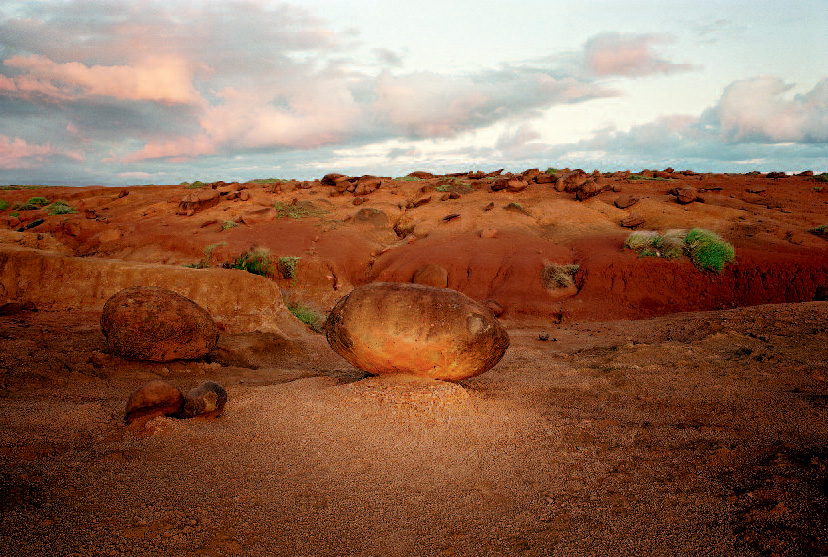
Thirty-five years have elapsed since that moment of impact that seized me with an abrupt intensity and force; a seemingly purposeful blow—a literal whack to the side of the head which took from me part of my sight. The reverberations of that event continue to this day. A tidal change has taken place in me from deep within—it feels to be on a cellular level, though I don’t know if that is even possible.
I am attracted now to the deep, volcanic contrasts of life, death and rebirth, and the possibilities inherent in destruction for renewal and regeneration. The wounding of the land, its sacredness, its need to heal is more than a metaphor for me. It is true on the level of our planet, and it is true within my own experience. The earth is no different, in this respect, from you and me.
We are as we respond. Like attracts like, as metal filings to a magnet. We see what we are. We resonate with that which corresponds to our being. It can be no coincidence that I wish to photograph conditions of strife and contradiction, as well as those places on earth of sacredness and transformation, whether by natural forces or human influence. I am surprised and I am not surprised that this interest persists. Our linkages arise from within. The implications of losing an eye, the transforming energies of that event, are still vibrating in me—and perhaps they always will. ♦
Notes
1 James D. Houston, “A Pilgrim’s Kisses”, Mānoa: A Pacific Journal of International Writing, Vol 1, No’s 1&2, 167, Spring/Fall 1989
2 Rowland B. Reeve, ed, Kaho’olawe: Nā Leo O Kanaloa (Honolulu: ‘Ai Pōhaku Press, 1995).
Adapted and expanded from David Ulrich’s The Widening Stream (2002)
From Parabola Volume 42, No. 3, “The Sacred,” Fall 2017. This issue is available to purchase here. If you have enjoyed this piece, consider subscribing.
